As described in a recent post, dental conditions are often hidden and painful. The following posts are going to help describe conditions that pets can get as well as treatment. Many people I talk with are surprised how we can help pets with dental conditions and save teeth whenever possible.

Whole books could be written on tooth resorption (TR) alone.
Periodontal disease and tooth resorption are the two most common diseases in cats. Tooth resorption in cats has many names – kitty cavities, FORL, and more. The prevalence has been reported in different age groups ranging from 20-100%. One can say for certain that it is more prevalent in cats as they age (typically age 5+). One study showed 69% of mixed breed cats age 10+ had tooth resorption and 100% of pure bred cats age 10+ did as well. In the same study only ~ 20% of these patients had these findings on awake visual exams. Another study showed 2.4 times as many TR lesions were found on x-ray as compared to clinical exams.
Here’s an awake finding that is certain to have a painful process:
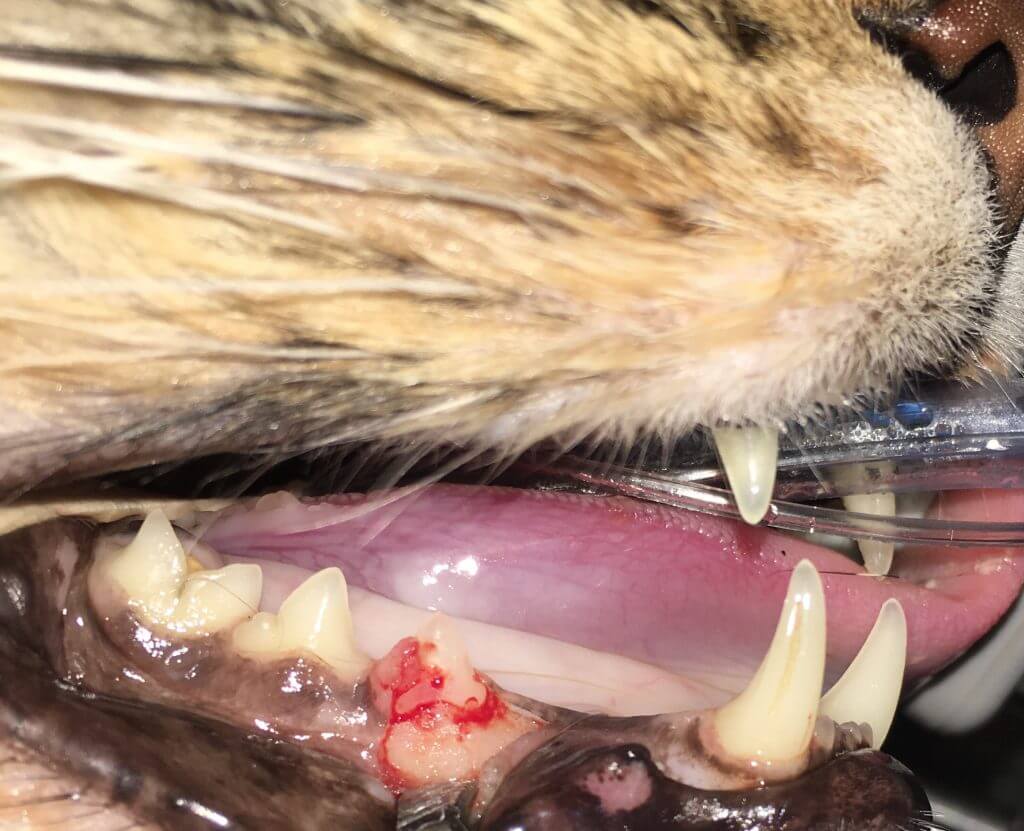
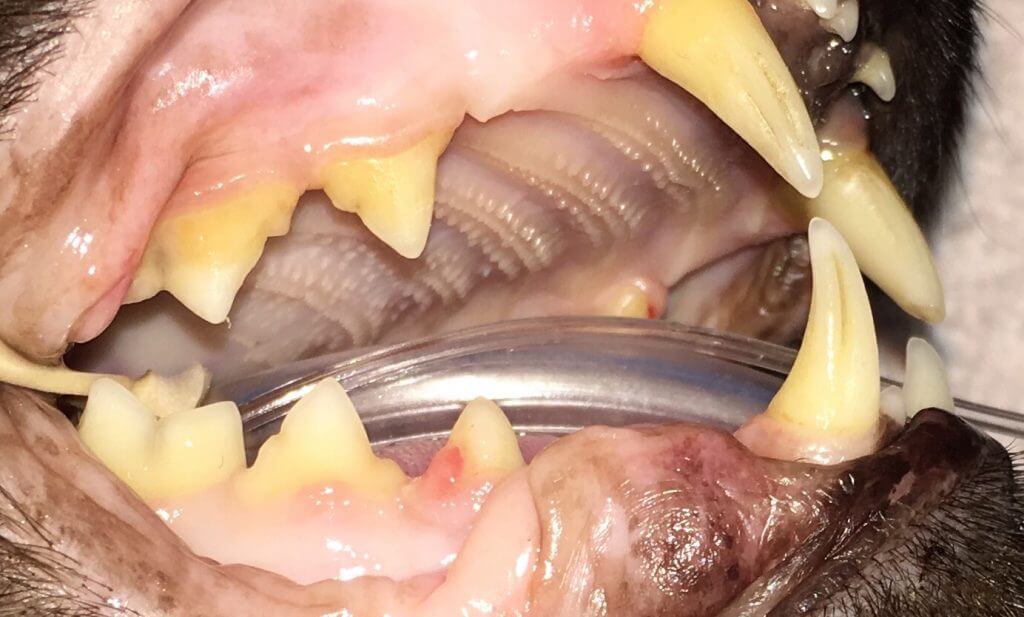
The x-ray of this site under anesthesia:
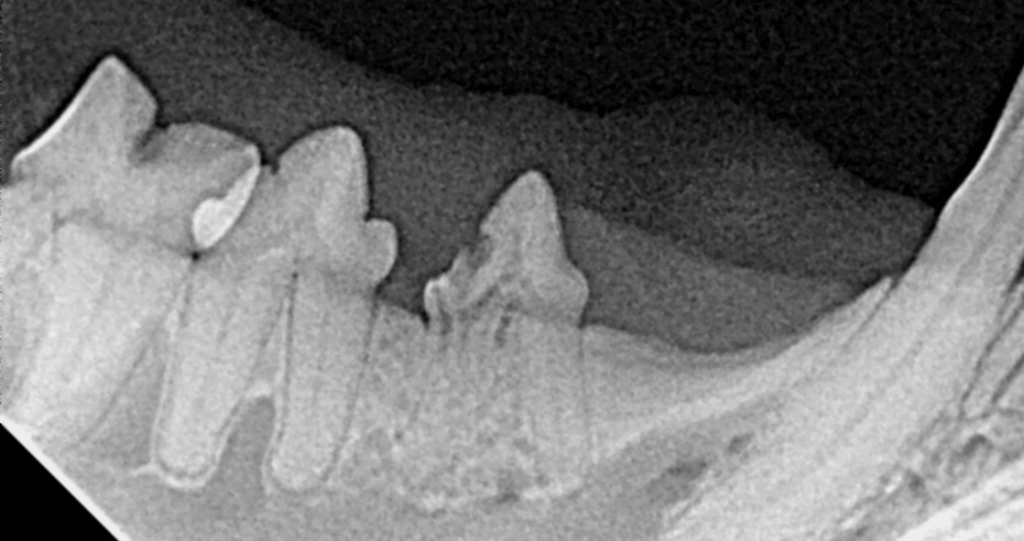
Revealing a focal ‘black’ spot of tooth (inflammatory tooth resorption) and loss of architecture of the root on the left (replacement resorption). A modified extraction technique (MET) can be used for the root on the left so that the remaining parts are below the gingival margin, but the root on the right must be removed in entirely or will continue to cause problems. Fragments of roots not having replacement resorption (aka retained tooth roots (RTR)) will not resorb. Tooth resorption is a painful often hidden disease usually happening along with periodontal disease. It is important to ensure your veterinarian uses intraoral radiographs or detailed 3D imaging for all cat dental procedures, as TR is not confined to the crown, but in fact, is a generalized recurring process. As stated above, due to the increased incidence of tooth resorption when inflammation is present, when you treat TR through extraction of teeth you slow the recurrence.
Some cats have canine teeth that are being extruded:
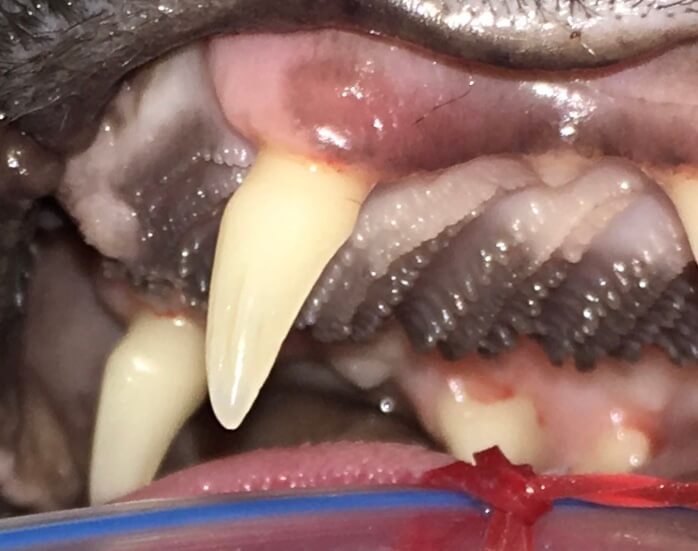
It is important to evaluate the whole mouth with intraoral x-rays in all of these cases as there is a significant correlation between extrusion of canine teeth in cats and tooth resorption. Other symptoms one may see on awake oral exam are buccal bone expansion (BBE) – this is enlargement of the bone usually surrounding the canine teeth in cats. (Green arrow)
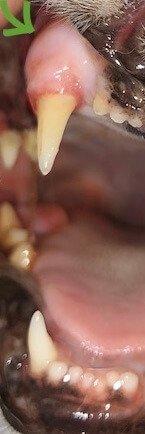
83% of BBE biopsy sites showed tooth resorption, another reason to ensure cats have the entire mouth evaluated with intraoral x-rays as well as probing for periodontal health measurements. Cats with tooth resorption can also have inflammation in the back of the mouth (caudal stomatitis):

This condition is painful and medical therapy alone will not solve the problem. Check out the stomatitis blog post to learn more.
In some cases, tooth resorption in cats and dogs are similar, but more likely they are different.
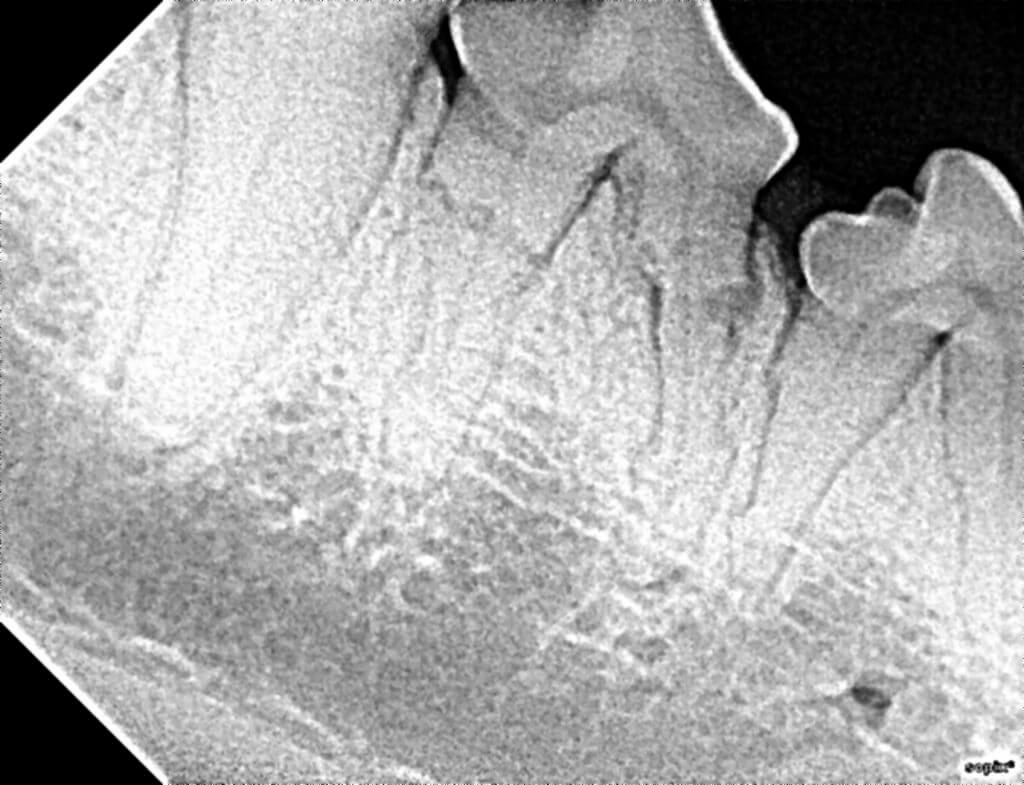
Dogs are more likely to get external root resorption:
This condition is the exception to the extract right away rule. This type of resorption tends to not be painful until it involves the pulp (but then it’s no longer external root resorption) or extends above the gumline. Should probing depths or tooth contour become abnormal, extraction then becomes needed.
Other less common findings are internal resorption:

This problem is painful and requires extraction; we cannot watch and wait.
Tooth resorption can also occur uncommonly in exotic cheek teeth. Most of the time, the occlusal table needs to be equilibrated (aka floating teeth in horses), and the tooth will continue to erupt resolving the problem with frequent occlusal adjustments.
Contact us to learn more about tooth resorption.
